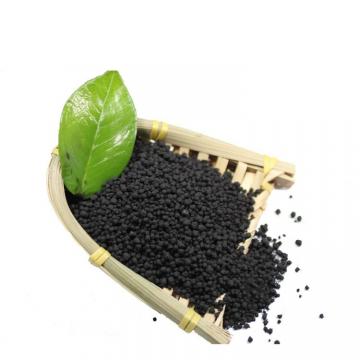Is the fulvic acid (FA) a kind of humic acids (HA)? When determining potassium humate containing fulvic acid, does the content of humic acid include the content of fulvic acid?

In the current detection process of potassium fulvic acid in China, a question is often encountered: Is fulvic acid humic acid? Can it be considered that Fulvic acid is a kind of humic acid?
First, we make the following discussion from a dialectical point of view:
Assuming that fulvic acid (FA) is humic acid (HA), it can be considered that FA is contained in HA.
- Mr.Cheng Shaoxin (formerly a member of the expert group of the Chemical Fertilizer Professional Committee of the China Chemical Industry Society, a director of the China Humic Acid Industry Association and a member of the Peat Humic Acid Professional Committee of the China Coal Society. He retired in November 1999 and has been participating in the firm until now. HA technology consultant, director of the Association of Old Technology Workers and provide voluntary consultation for relevant domestic HA companies.) The representative work “Introduction to Humic Acid Substances” mentioned: HA can be divided into three categories according to solubility, namely black HA, brown HA (ulmic acid) and FA. Then it can be understood that FA is HA, and when determining HA, FA can not be excluded.

- At present, the universally recognized humic acid classification and naming system in China and abroad was proposed by Romania’s Kononova, as shown in the following table:
| Soil organic matter | 1、Non-humus——Fresh and inadequately decomposed animal and plant residues | |
| 2、Humus | (a)Humus Substances:Including black HA, FA , humin and hymatomelanic acid. | |
| (b)Non-humus Substances: the strong decomposition products of biological residues and products re-synthesized by microorganisms, including proteins, carbohydrates, waxes, resins, fats, tannins, lignin and their decomposition products, etc. | ||
It can be judged from this table that HA includes FA acid in China and abroad.
Assuming that fulvic acid (FA) is a single substance, and humic acid (HA) is a separate substance, it is necessary to exclude each other when testing the two.

(1) According to the agricultural potassium humate testing standard GB∕T33804-2017, extract the soluble humate from agricultural potassium humate with water at a certain temperature and then use a certain amount of acid to acidify the drawer to a certain pH value. After that, filter with medium-speed quantitative filter paper, wash the precipitate with a certain amount of water, a small amount of times and dry the precipitate in a drying oven to a constant weight. After weighing, subtract the ash to calculate the soluble HA content.
This standard uses the properties that fulvic acid is soluble in acidic solutions, neutral solutions, acetone and ethanol solutions. The fulvic acid dissolved in water is excluded during the analysis and only the substances precipitated with acid are used. It shows that this standard supports that fulvic acid and HA are two separate substances.
(2) It is mentioned in the standard HGT5334-2018 of the Ministry of Chemical Industry for potassium fulvate that, the fulvic acid in the sample is extracted with water and then the HA is precipitated with acid, and the supernatant liquid dissolved in the acid solution is the fulvic acid solution. .
This standard excludes HA when testing fulvic acid, likewise supports that fulvic acid and humic acid are two separate substances.
So in practical applications, what standards should we follow to measure the HA content and the FA content?
In actual applications, as a supplier of humic acid products, we are obliged to understand the customer’s purpose of use, and based on this judge the suitable product for the customers.
Application of water-soluble fertilizer containing humic acid
Among the new types of fertilizers, water-soluble fertilizers containing HA are currently the most popular on the market. This fertilizer has the effects of both chemical fertilizers and humic acid fertilizers. In addition, it can increase the utilization rate of chemical fertilizers, reduce the cost of farmers’ use, and greatly contribute to the energy-saving and emission-reduction advocated by the government.
Take the solid product of water-soluble fertilizer (major element type) containing HA as an example. The determination of HA content is carried out in accordance with the regulations of NY/T 1971. The principle of this standard is: the humic acid in the sample solution is quantitatively precipitated under acidic conditions, after the filtrate is discarded, the organic carbon in the precipitate is oxidized with a quantitative potassium dichromate-sulfuric acid solution.
This method also excludes fulvic acid, so be careful when choosing products. If the standard given by the supplier does not exclude the content of fulvic acid when testing HA, then the water-soluble fertilizer containing humic acid produced with this raw material will be lower than the national standard, causing the product to be unqualified.
Potassium humate and sodium humate are used as an additive for briquette
According to the coal industry standard MT/T 1182-2019, the water-soluble humic acid content in this standard shall be implemented in accordance with the provisions of GB/T 11957. The sample pretreatment is changed from sodium hydroxide solution to distilled water and the subsequent analysis does not adopt the step of acid precipitation.
This standard support that humic acid and fulvic acid are same substance.
In fact, there is no obvious boundary between humus and non-humus. Humic acid, fulvic acid, humin or transitional lignin, tannin and humus are a series of continuous chain molecular structures and transformation processes. Therefore Mr. Cheng Shaoxin proposed that there is no need to press too hard for naming consistency, just the essence and connotation are understood.






